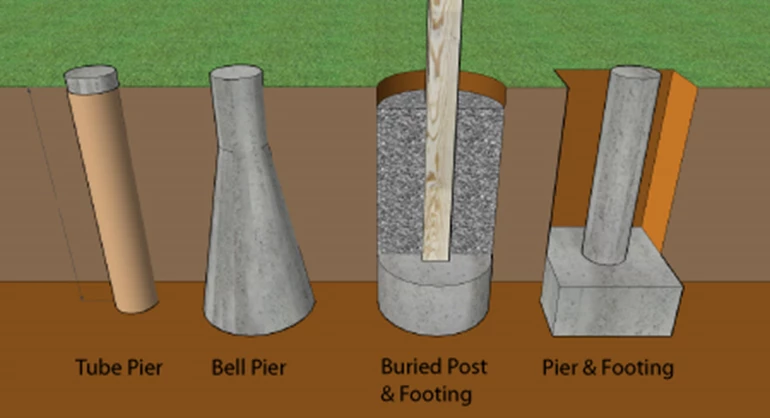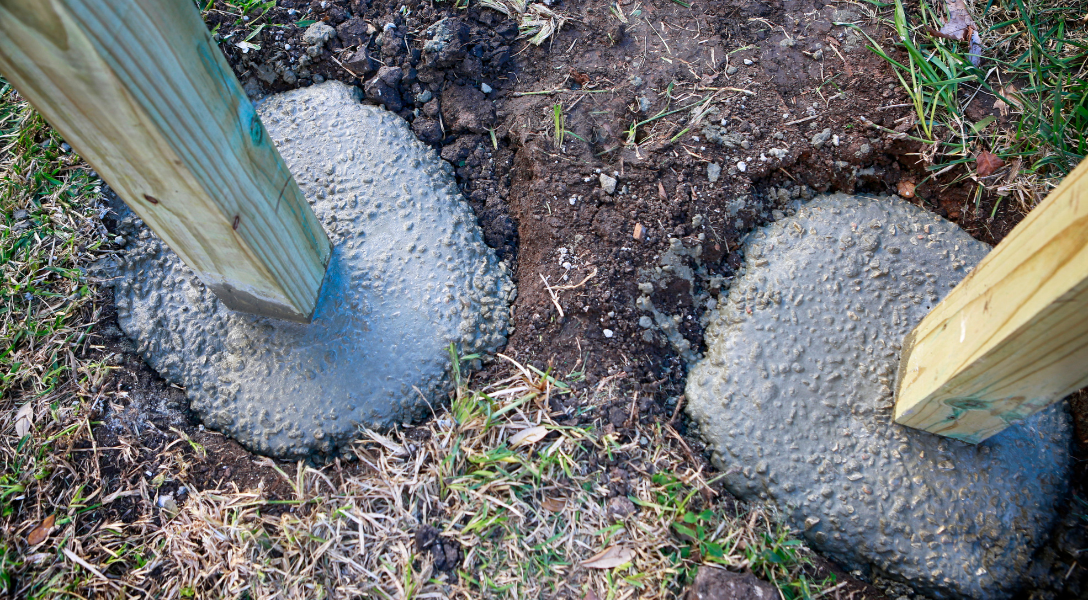Expert Tips for Putting Up Deck Footings to Assistance Your Outdoor Space
When it pertains to building a deck, among the most essential elements to take into consideration is the setup of appropriate grounds. These footings are the structure whereupon your outdoor space will relax, supplying stability and assistance for many years to find. However just what does it take to install deck grounds appropriately? In this discussion, we will certainly discover professional tips and strategies that can help make sure a successful and long lasting deck setup. From picking the ideal sort of footings to preventing typical mistakes, we will supply you with the knowledge and understandings you need to with confidence get started on your deck-building trip. So, allow's dive right in and uncover the trick to a solid and lasting exterior area.
Importance of Correct Deck Grounds
Correct deck grounds are important for guaranteeing the security and long life of your outdoor room. When building a deck, it is important to take notice of the foundation on which it will certainly relax. Deck footings offer the needed assistance for the whole structure and aid distribute the weight uniformly - Deck Footings. Without solid and appropriately mounted grounds, your deck might end up being unstable, leading to safety hazards and costly repairs.

In addition to security, proper deck footings also add to the long life of your exterior room (Deck Footings). Grounds that are developed and created to withstand the aspects and dirt conditions in your location will help protect against the deck from settling or changing in time. By guaranteeing the footings are appropriately sized and installed, you can decrease the risk of damage to the deck framework, prolonging its life-span and lowering the requirement for costly repairs or substitutes

Selecting the Right Type of Footings
When choosing the suitable kind of footings for your deck, it is necessary to consider factors such as dirt problems, neighborhood structure codes, and the general layout of your outdoor room. The sort of footing you select will play an important duty in guaranteeing the stability and durability of your deck.
One usual type of footing is the concrete ground. Concrete footings are suitable for the majority of soil conditions and offer exceptional support for decks.
Sometimes, you might require to utilize specialized footings, such as pile footings or deep structures, if you are building a multi-level or huge deck. These footings are developed to disperse the weight of the deck over a bigger area, ensuring stability and stopping resolving or sinking.
Prior to selecting a kind of ground, it is vital to get in touch with regional building ordinance and laws to ensure compliance. Furthermore, think about the layout and intended use of your exterior space. Variables such as the size, shape, and load-bearing demands of your deck will certainly affect the sort of footing that is most appropriate.
Preparing the Ground for Footing Installment
To effectively prepare the ground for footing setup, it is important to evaluate the dirt conditions and take essential actions to make sure stability and longevity of the deck. The initial action is to dig deep into the location where the footings will be set up.
When Visit Website the area has been dug deep into, the next step is to portable the soil. This can be done making use of a plate compactor or by utilizing a hand tamper. Compacting the dirt helps to eliminate any spaces or air pockets, which can cause working out and instability with time.
After compacting the soil, it is essential to lay a layer of gravel or smashed rock at the end of the excavation. This will certainly provide water drainage and help to stop water from pooling around the footings, which can cause disintegration and instability.
Step-by-Step Overview to Putting Up Deck Footings
After correctly preparing the ground for footing installation, the next action is to begin the procedure of installing deck footings. This step-by-step overview will certainly provide you with a clear understanding of just how to install deck footings for your outside space.
Identify the place: Start by noting the positions of the deck grounds using stakes and string. Guarantee that the places straighten with the design and format of your deck.
Dig the holes: Use a post opening miner or an auger to dig the openings for the footings. The deepness and diameter of the openings ought to remain in accordance with regional building regulations and the certain demands of your deck design.
Degree the openings: Use a level to make sure that the holes are dug to the proper read the full info here depth and are degree with each other. (Deck Footings)
Add crushed rock: Area a layer of gravel at the bottom of each hole to enhance drainage and stop the timber from rotting.
Put the footings: Position the grounds into the holes, seeing to it they are degree and plumb. Make use of a degree and a determining tape to ensure precision.
Secure the grounds: Pour concrete into the holes around the grounds, loading them to the top. Utilize a message degree to make certain the grounds continue to be level as the concrete sets.
Permit time for curing: Allow the concrete cure according to the maker's instructions before continuing with the deck building.
Typical Blunders to Stay Clear Of During Footing Installation
One essential aspect to consider throughout the installment of deck grounds is preventing usual blunders that can jeopardize the stability and durability of your outside area. While deck footings might feel like a straightforward and straightforward component of the building and construction process, overlooking particular elements can cause pricey repair services and prospective safety hazards down the line.

Furthermore, neglecting to install appropriate water drainage procedures can create water to build up around the footings, resulting in rot, decay, and the eventual weakening of the deck's structure. In addition, using the incorrect sort of footing product or failing to adequately secure the footings can compromise their structural integrity.
To avoid these errors, it is vital to talk to an expert or adhere to sector guidelines to ensure proper ground setup. By doing so, you can guarantee the stability and longevity of your outdoor space, supplying a satisfying and secure environment for many years to come.
Verdict
To conclude, setting up proper deck footings is important for the stability and durability of your outdoor area. By selecting the best kind of footings and properly preparing the ground, you can make sure a strong structure for your deck. Following a step-by-step overview and preventing typical errors during footing installation will better improve the longevity and safety and security of your deck.
Correct deck footings are crucial for making sure the security and durability of your outside area. The grounds serve as a link between the ground and the deck, enabling the weight of the deck and its look at here now passengers to be spread equally into the soil.One typical type of ground is the concrete footing. Insert the footings: Place the footings into the openings, making certain they are level and plumb. Protect the grounds: Put concrete right into the openings around the grounds, filling them to the top.